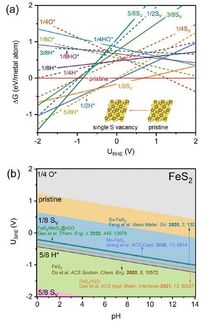Novel process extends life cycle of valuable catalysts: A greener option for chemical manufacturers
Electrochemical approach offers a solution to the decades-long challenge of recycling homogeneous catalysts
Advertisement
Imagine a typical recycling plant. Now imagine that the plant is a chemistry lab, and the crushed soda cans and waist-high stacks of junk mail have been replaced by microscopic structures worth tens of thousands of dollars per gram.

Xiao Su (right), an assistant professor of chemical and biomolecular engineering and a researcher at the Beckman Institute for Advanced Science and Technology at the University of Illinois Urbana-Champaign, is part of a team that developed an electrochemical technique for recycling highly valuable homogenous catalysts. The research, led by graduate students Stephen Cotty (center) and Jemin Jeon (left), will help make the chemical manufacturing industry greener, more affordable, and more innovative.
Beckman Institute for Advanced Science and Technology
A team of researchers from the University of Illinois Urbana-Champaign has developed an electrochemical technique for recycling highly valuable homogeneous catalysts in an effort to make the chemical manufacturing industry greener, more affordable, and more innovative.
Homogeneous catalysts are powerful tools used heavily in chemical and pharmaceutical manufacturing.
“What makes [homogeneous catalysts] incredibly valuable is their unique ability to produce large volumes of value-added chemicals and commodities,” said Xiao Su, an assistant professor of chemical and biomolecular engineering, a researcher at the Beckman Institute for Advanced Science and Technology, and the senior investigator on the study.
The ability to recycle homogeneous catalysts without destroying their chemical activity has challenged chemists and chemical engineers for decades.
Typically made of platinum-group metals, continued use of these catalysts from scratch requires frequent mining. Because such platinum-group metals are sparse, their use should be conserved, Su said.
During chemical reactions, homogeneous catalysts often end up in complex chemical mixtures and are difficult to separate from other components. The few existing methods for recycling catalysts are energy-intensive, and their reliance on heat tends to destroy the catalyst structure itself while creating a large carbon footprint.
“Currently, many industries don’t recycle homogenous catalysts at all due to the costs and the complexity of the process; they just throw them away and live with the cost,” Su said. “If the catalyst does get recycled, the process can be very expensive and inefficient, and the catalyst structure is often destroyed. In general, the burden is placed on the mining side, because there’s a continuous need for more of those platinum metals.”
The cost of persistent mining is absorbed by manufacturing companies, end users, and the environment due to increased waste production.
The researchers’ proposed recycling method, published in Science Advances, applies an electrical field to a uniquely tailored surface called a redox-electrode. The catalysts separate from the chemical mixture they are in and bind to the surface under the electrical field, removing them from the reaction they're in and allowing them to be recycled. To reuse the catalyst, a chemist can apply the opposite electrical field to the redox-electrode surface to release the catalyst into a new solution.
Under the electrical process, catalysts can be reused for many cycles.
“The cool part about our recycling method is that we’re purely electrically driven,” Su said. “It’s a step toward making the whole manufacturing process more sustainable and having electricity driving things instead of heat.”
The transition from fossil fuel-based energy inputs to renewable inputs to run such a recycling system supports chemical engineers’ vision of electrification.
“We are excited to see these electrochemical applications tackling challenges in chemical manufacturing,” Su said. “Eventually we’d like to see an entirely zero-waste, high-energy efficiency chemical manufacturing process.”
The ability to recycle catalysts not only benefits the environment; it powers innovation. Despite the existence of several homogeneous catalysts, their current inability to be recycled effectively makes them very expensive, limiting their widespread industrial use.
“What we’re doing now is making these very powerful catalysts feasible and cheap to use for important reactions,” Su said. “If we are able to implement this simple method of recovering catalysts, our technology can enable new reactions to be done that are otherwise too costly. So hopefully we can open up new, greener ways of making things that are not even possible today.”
So far, researchers from the university have demonstrated their recycling process on select platinum-group metal catalysts. The next step is applying the method to broader classes of platinum-group metal, as well as other transition group metal catalysts.
“As chemical engineers, we’re continuing to push for energy efficiency, a lower carbon footprint, and sustainable chemical processes, and this is one step toward that goal,” Su said.































































